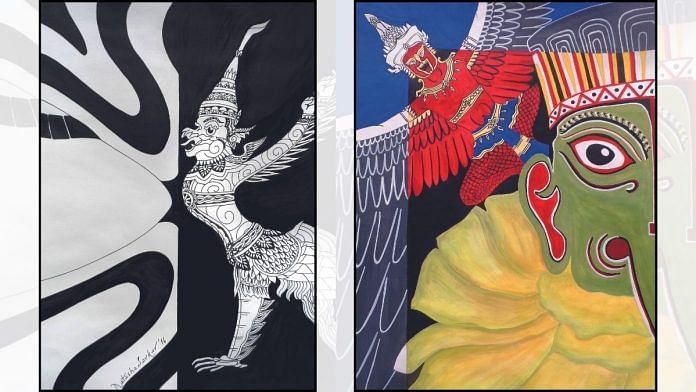Soaring High…
…is the mighty vulture Jatayu, believed to be the vahana of Lord Vishnu. A young Jatayu and his brother Sampati would often compete to figure who could fly higher. On one such occasion, Jatayu flew so high that he was nearly seared by the sun’s flames. In India, Jatayu’s head, with a long beak and beady eyes, is crafted all of fine wood by the Polia Deshi community of North Dinajpur in West Bengal for the Gambhira masked dance.
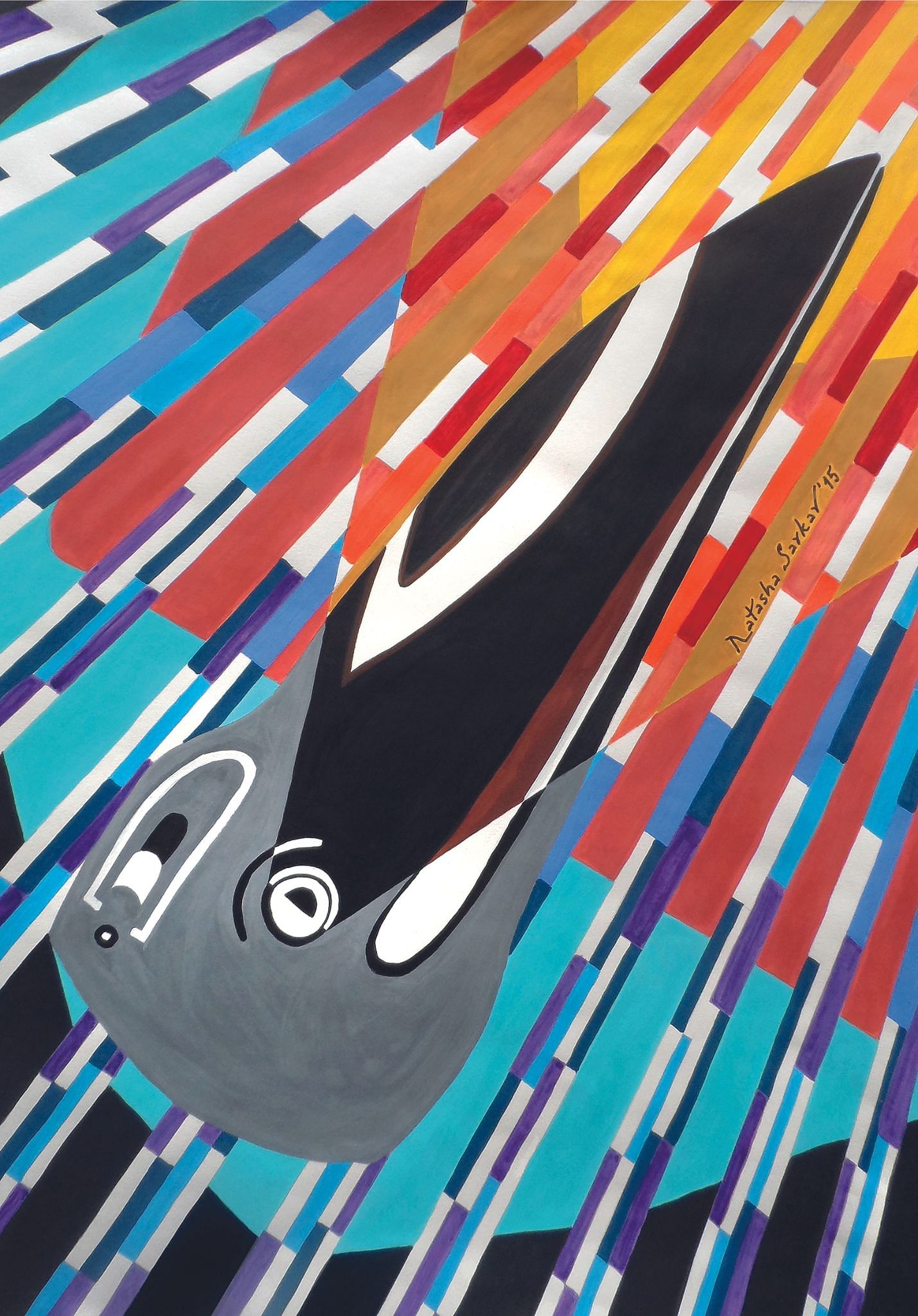
Later in the epic, when the villain abducts the heroine sweeping her off in his aerial chariot, Jatayu is the only witness to this incident. He makes a valiant attempt to rescue her but, is mortally wounded. For their Ankiya Bhaona theatre tradition, the Assamese make exquisite Jatayu masks.
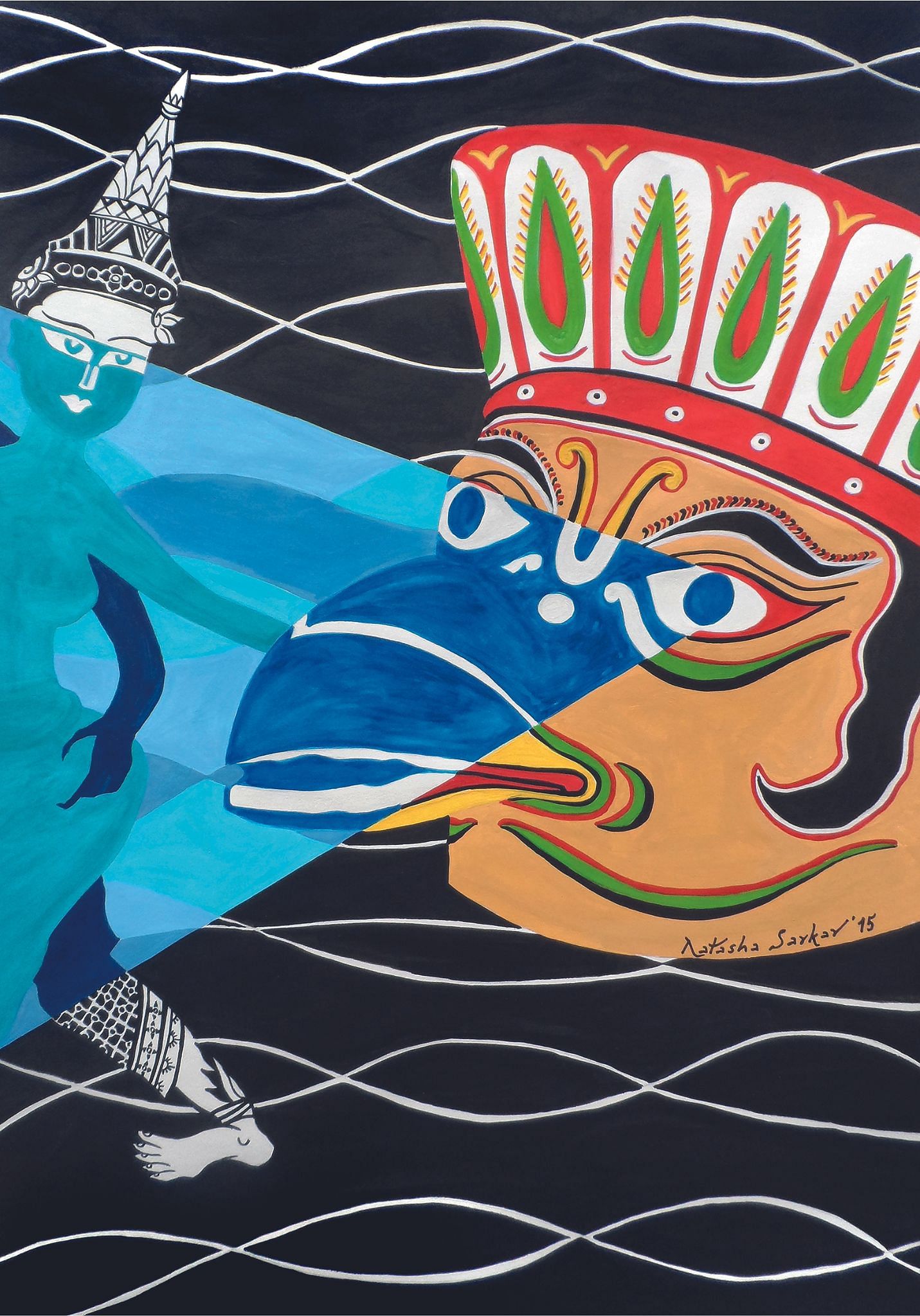
In the 14th-century Adhyatma Ramayana, events and characters are viewed as divine allegory. In this version, the hero is an incarnation of Vishnu, and the heroine—that of Lakshmi.
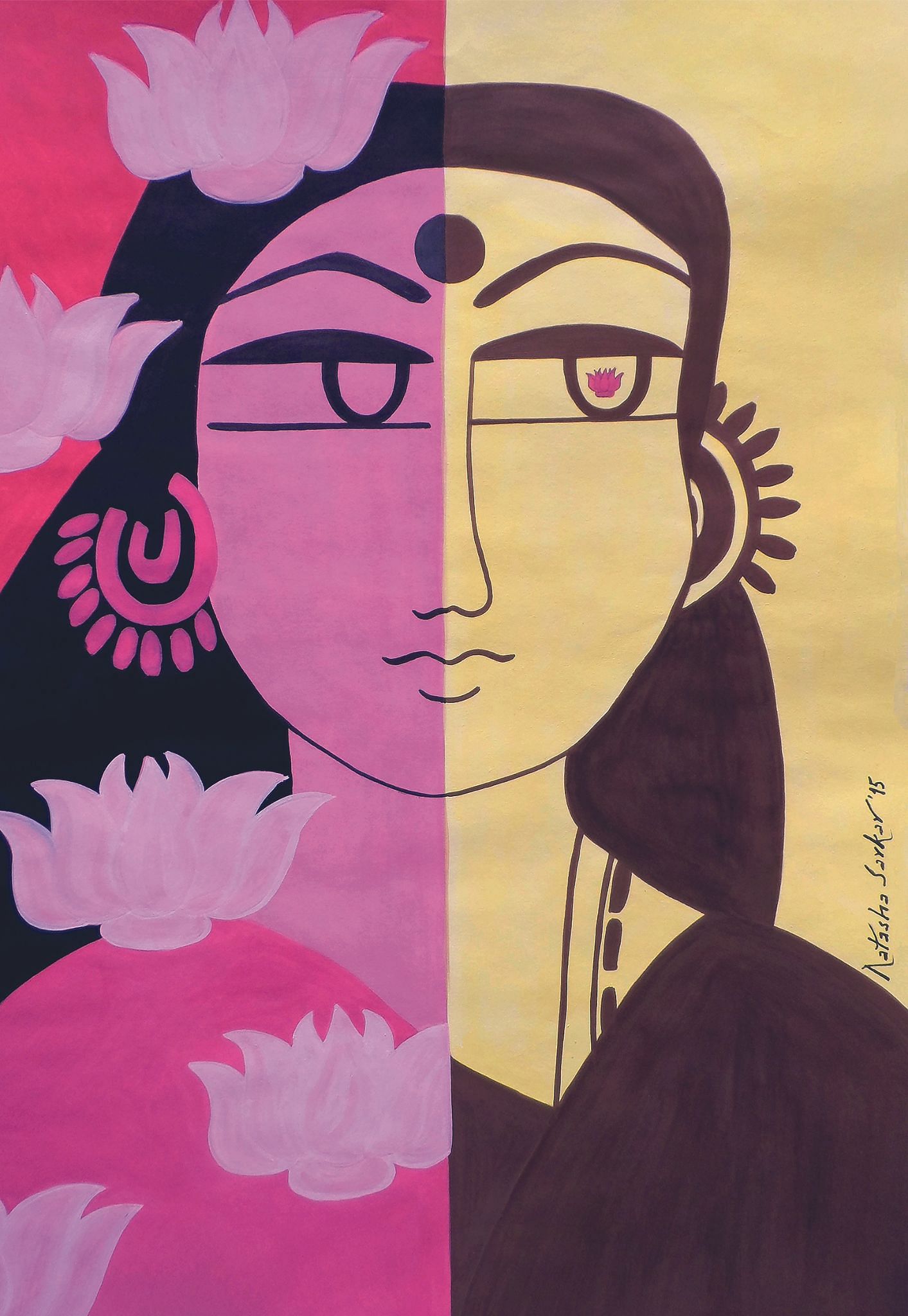
Here only a maya or illusion of the heroine is abducted and not the real heroine, leaving perhaps an imagined role for the vulture to play in the spiritual and transcendental scheme of things.
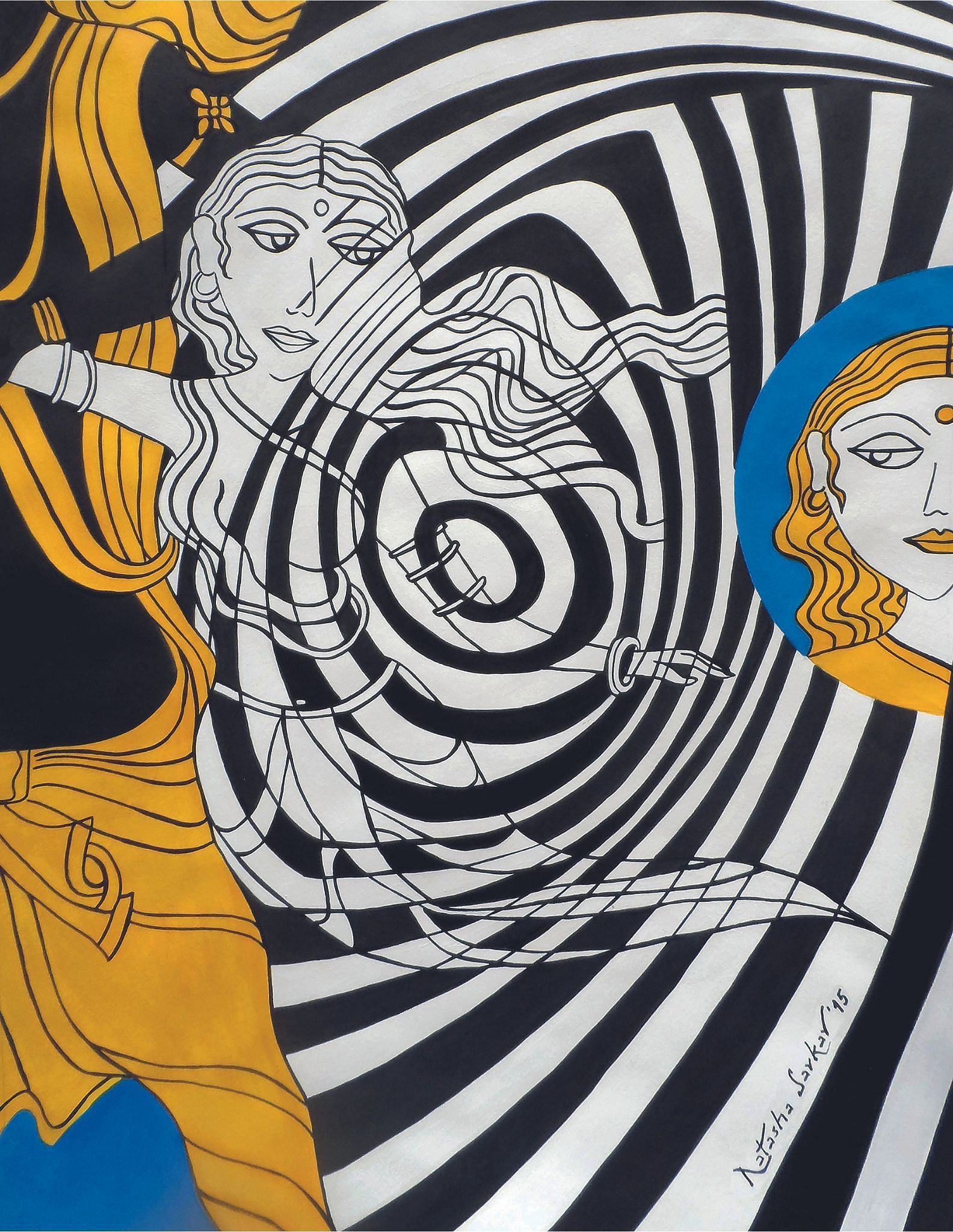
Garuda is the other legendary bird-like creature resembling an eagle. In the popular imagination of the northeastern Indian state of Assam, this brave eagle is all of green, and exquisite masks of the bird are made of split bamboo, cloth and clay by the Sibsagar folk community for the Ankiya Bhaona masked dance.
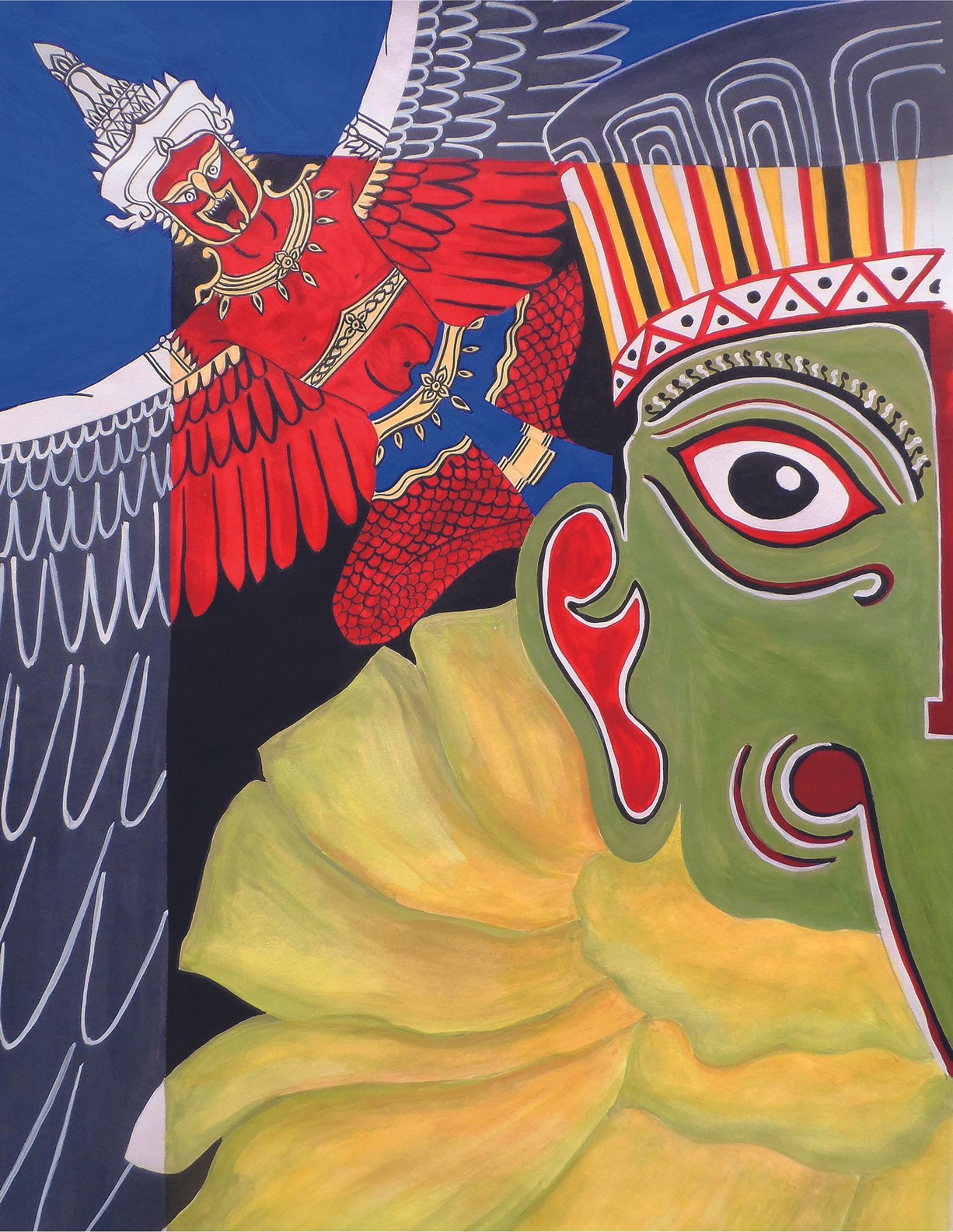
In Thailand, since the Thai kings were considered to be incarnations of Vishnu, and the mythical bird is the God’s chosen vehicle, this bird deity came to symbolize the power and authority of the king. In time, the God-bird, in red, became the national emblem of Thailand, used as a symbol of royalty for centuries, and continues to be rendered on seals to authenticate Thai government documents. For the Indonesians, the bird is not only the national emblem—Garuda Pancasila, but also enjoys a distinct place as the country’s national airline—Garuda Indonesia.
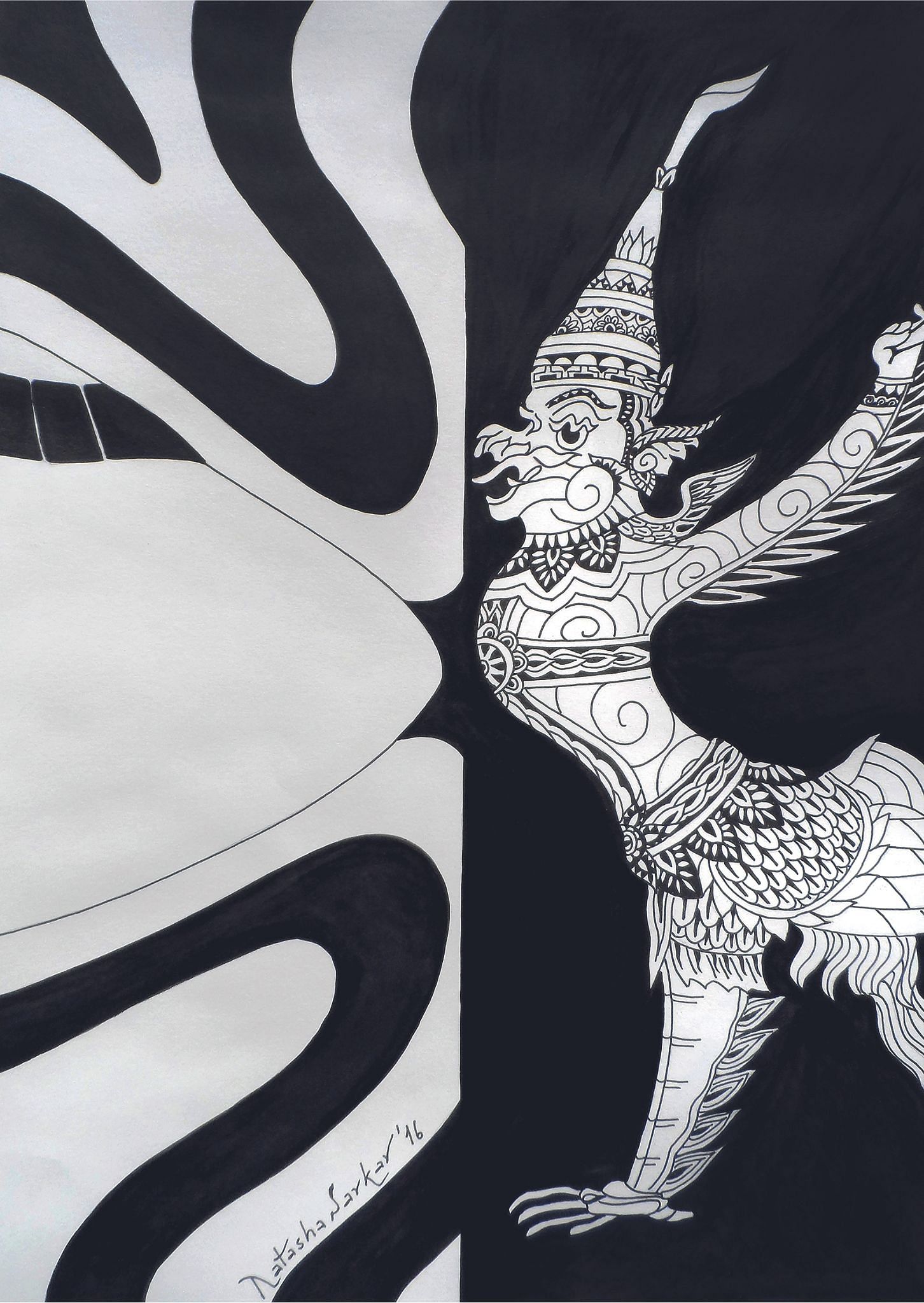
“Sweet Kadambara, have you seen my fair one? Speak,
Basil, you must know, for her limbs are like your graceful
branches… Sweet Tila, fairest of all, where is she who loved
your flowers? … Have pity. Speak to me … Where are her soft
limbs, her moon bright face, her shapely neck, her red lips…”
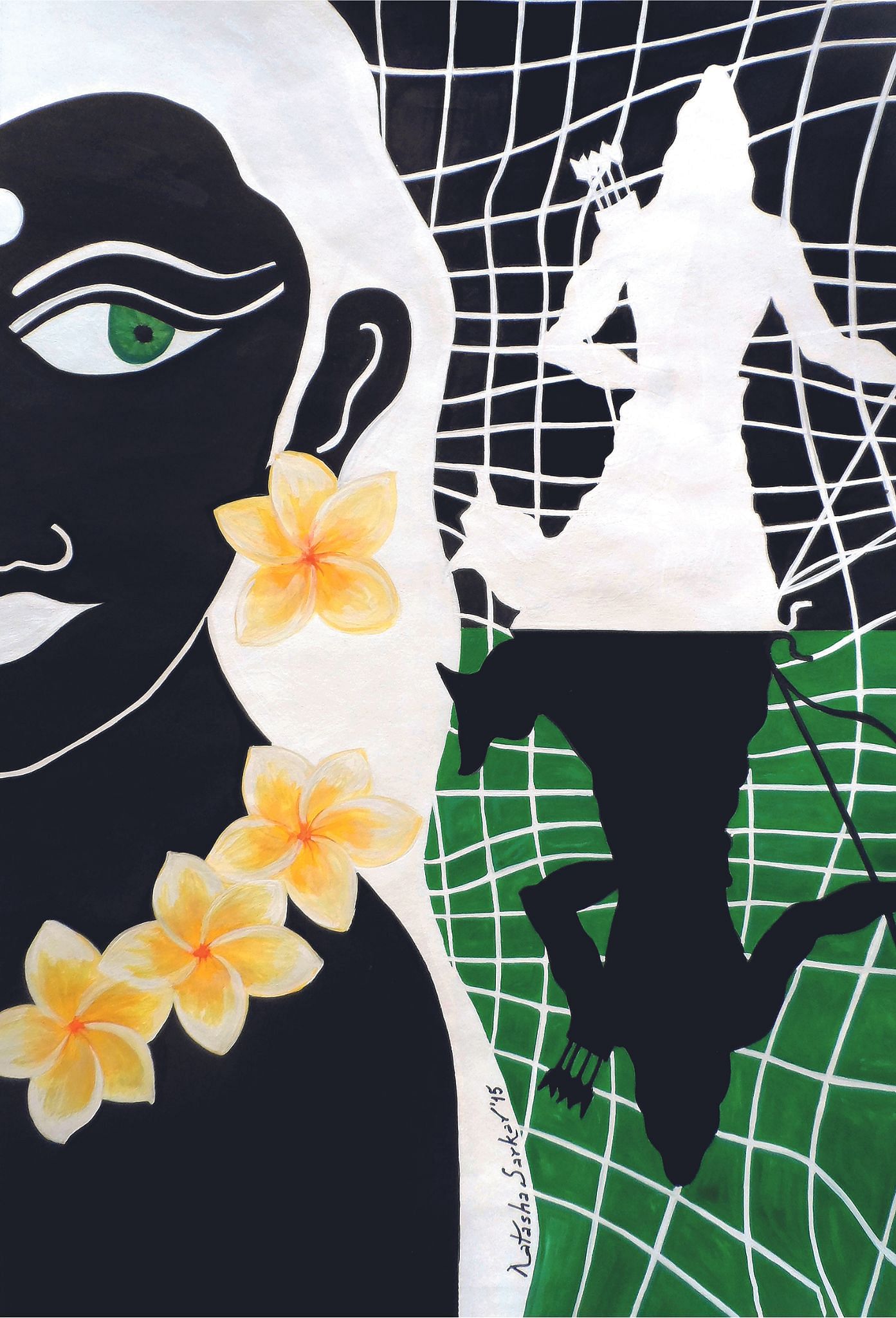
© Natasha Sarkar
Elsewhere…
“Look brother, the Kakila birds mock me with their joyful
notes and the yellow clusters of the cassias awake my longing
for Sita … From tree to tree each bird seeks his mate, filling
the air with their triumph and the call of the Spring is
unbearable. My eyes are tortured for the sight of Sita.”
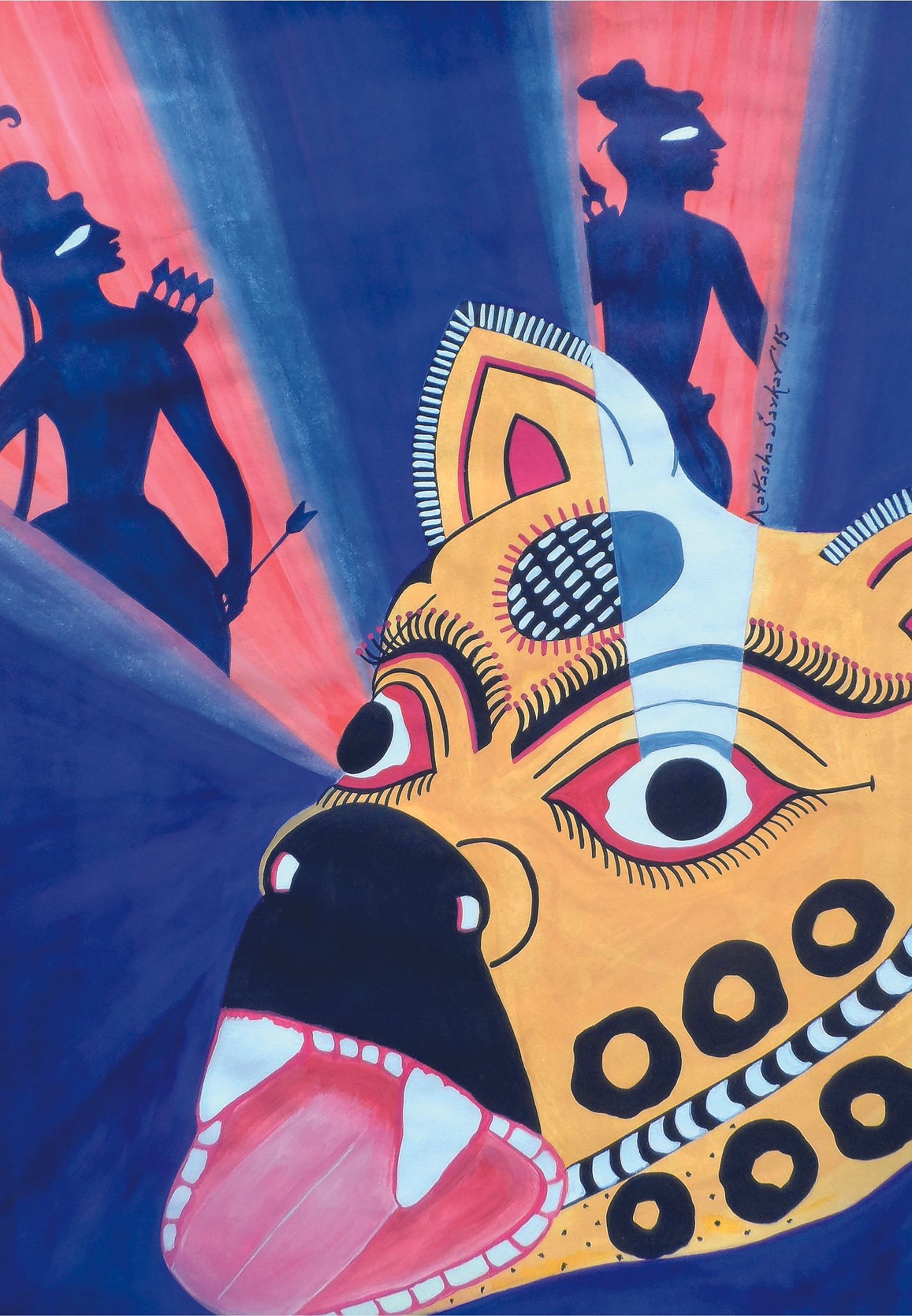
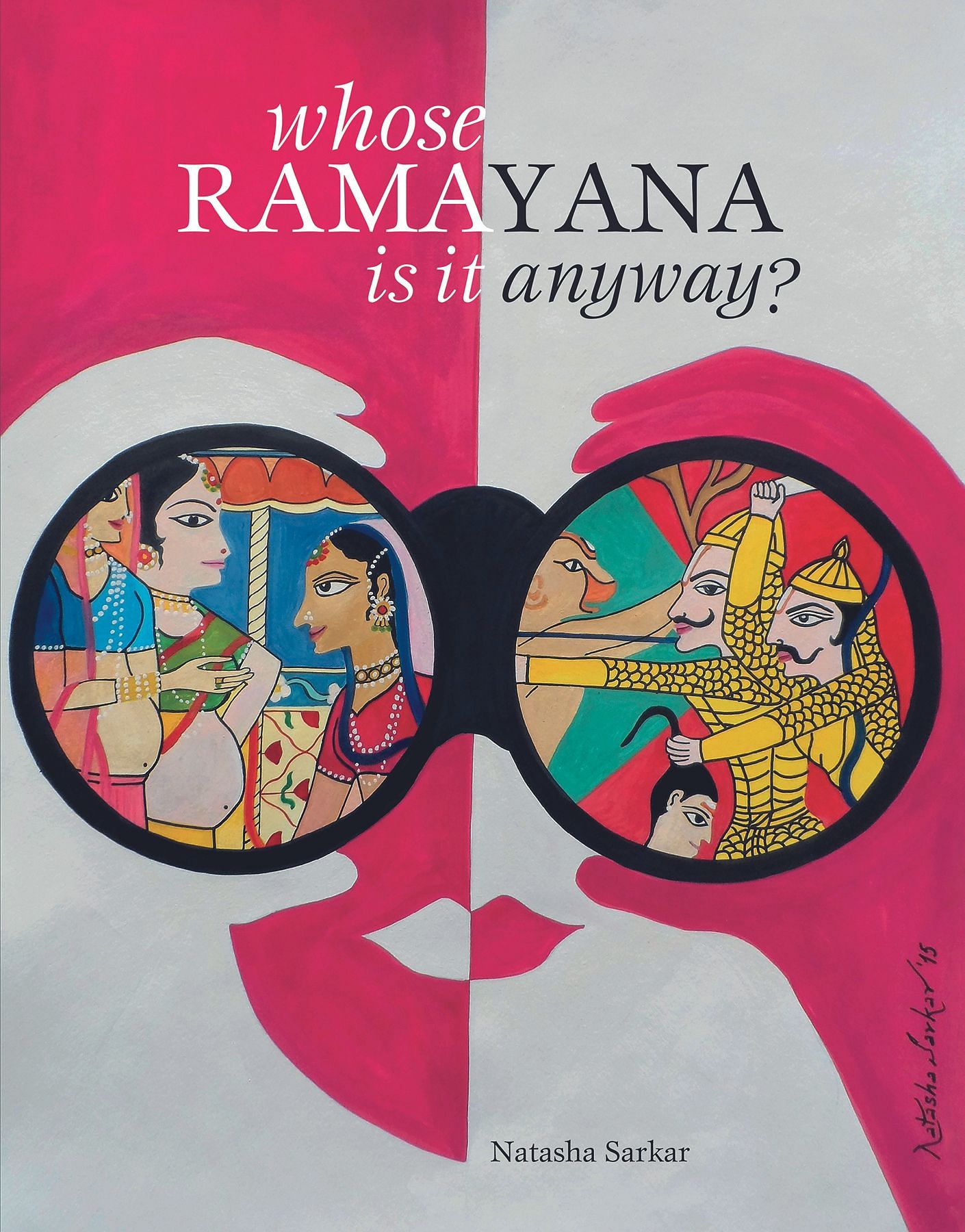
This is an excerpt of “Soaring High” from Whose Ramayana Is It Anyway by Natasha Sarkar, published by Mapin Publishing, Ahmedabad (www.mapinpub.com). Text and Illustrations © Natasha Sarkar


